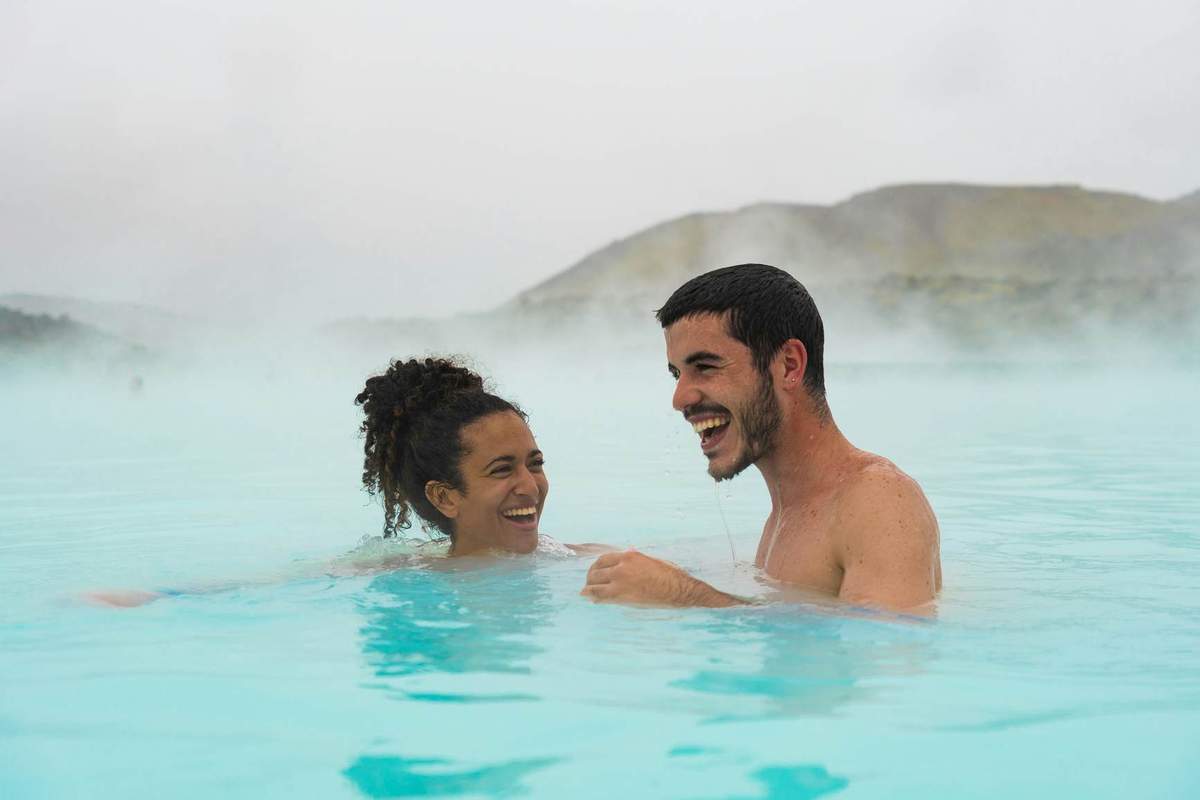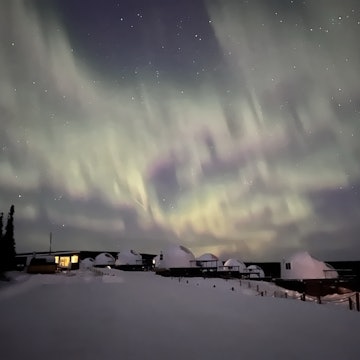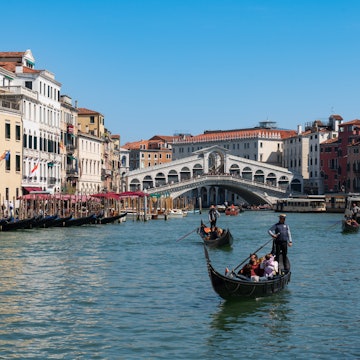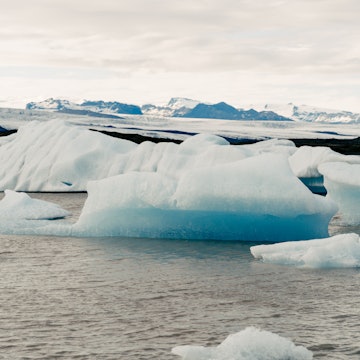
The real-life magic of rescuing baby puffins in the Westman Islands
Dec 6, 2019 • 5 min read
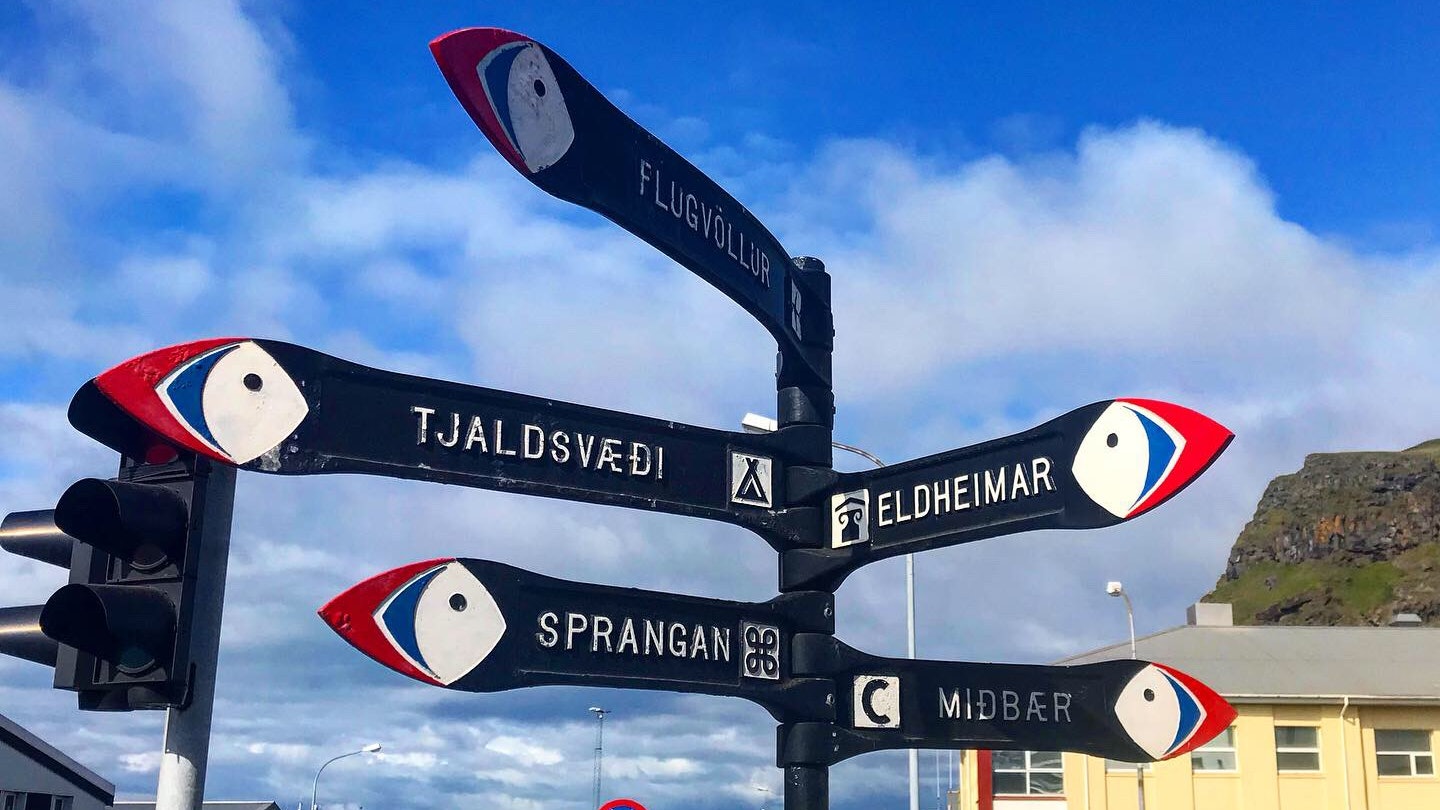
Even the street signs in Heimaey are puffin-themed @ by Carrie Dykes / Lonely Planet
Late summer in the secluded Westman Islands, known in Iceland as Vestmannaeyjar, means it’s time for the Puffling Patrol. That’s when pufflings (the official term for puffin chicks) have hatched from their gloriously high-perched cliffside nests and residents and visitors alike take part in a tradition that helps these baby birds find their way.
The pufflings take to the sea after hatching, but easily confuse city lights for stars and end up in town. Volunteers head out with cardboard boxes during the night to search for confused pufflings. They are taken to the Sea Life Trust, a beluga whale and puffin rescue, to be weighed and examined. Once they are deemed healthy they are released to the sea.
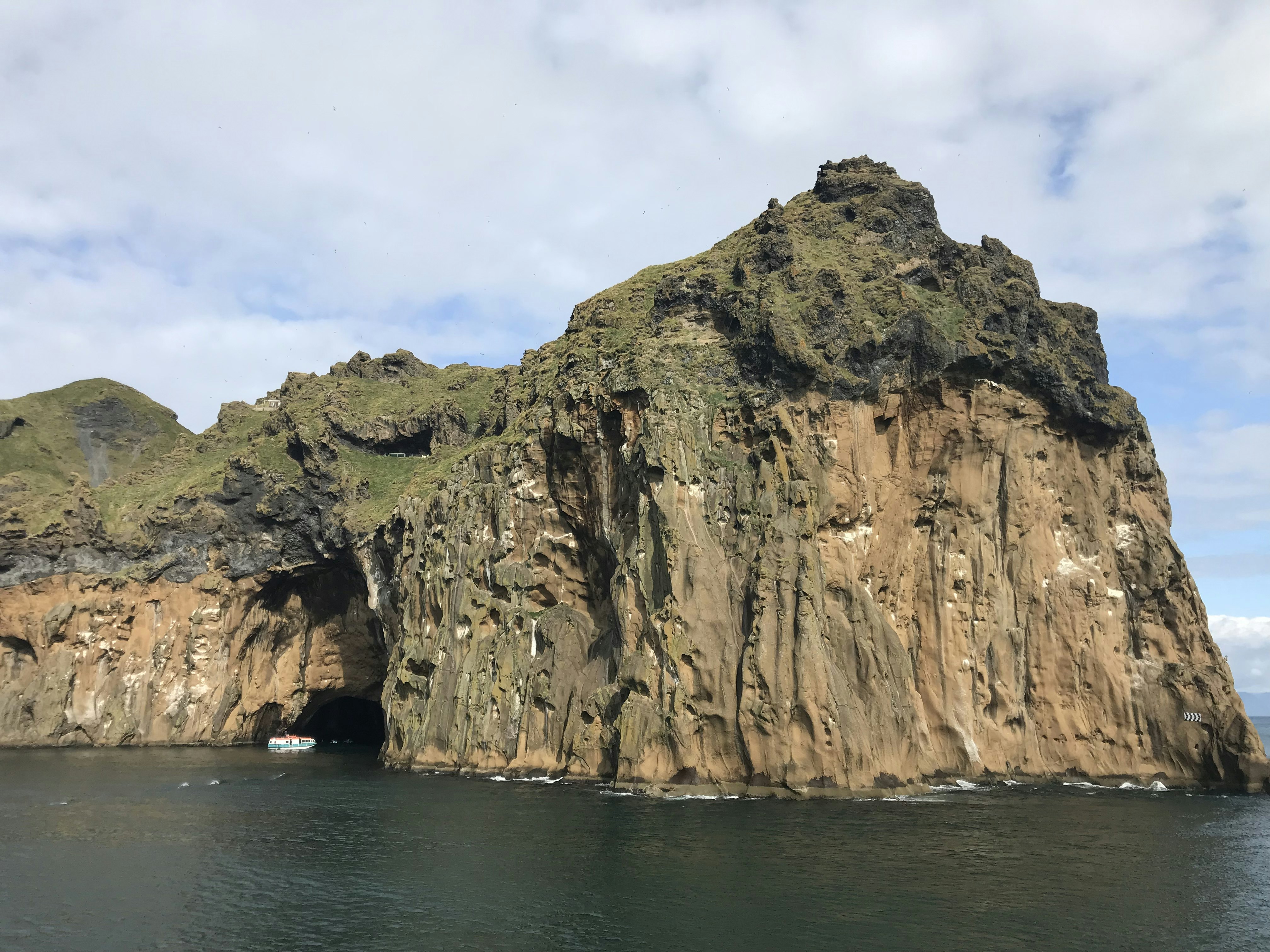
The Westman Islands are islands formed by underwater volcanic action that took place 10-20 thousand years ago off the south coast of Iceland (only one island, Heimaey, is inhabited). The islands are known as the puffin capital of the world and Puffling Patrol has been an annual custom for decades.
Puffin population numbers have dropped over the years due to warming waters, which are not conducive to their diet needs and are uninhabitable for their usual fare. The warmer the ocean gets, the more important it is to save young chicks, and the more wind up in trouble.
My 6-year-old son, Finn, had been obsessed with puffins for months, begging to go see the “clowns of the sea” in real life. My husband and I were loosely talking about a family camping and road trip in Iceland, but nothing was set in stone. That is, until Finn began to also bring up a trip to Disney, inspired by school friends. In hopes of dodging what – to us – felt like an expensive, manufactured experience, we immediately booked our tickets to the land of fire and ice, in search of real magic in the wild, untamed landscape.
Related: Where to travel with your elementary school kids

Although we were in Iceland in late August, which is thought to be peak puffin season, we had traveled for four days around the south and east of Ring Road with nary a puffin sighting. I was relieved that we would be hopping a ferry to the puffin hotbed of Heimaey on the Westman Islands.
The ferry ride offered majestic, reality-defying scenery with massive volcanic rocks covered in verdant mossy grass jutting out of crystalline waters. Above us, puffins soared in and out of the nooks and crannies of the craggy islands where they nested. While we reveled in the picturesque landscape, Finn’s puffin fix was not satiated. “They are too far away,” he protested. “That could be any kind of bird. I need to see their beaks.”

We set up camp at what I imagine to be the Nordic Ferngully (Vestmannaeyjar Camp Site) and set out into town. We found street signs depicting puffin beaks and bars with drunk puffins as their mascots, but no tangible puffins crossed our path. The way I pictured it, the town would be littered with locals holding cardboard boxes, ushering tiny pufflings in to take them to safety, but that was not the case. Like every good fairytale, a quest was required – something that must be done to unlock the next phase of the story. We needed to see their beaks.
The next morning, while my husband had a tee time at the Herjólfsdalur Golf Course at our campsite, Finn and I headed to the Sea Life Trust, hoping to see some puffins along the way. Failing that, I figured, we might meet some of the adorable birds at the Trust, which also doubles as a small aquarium. Between the twenty hours of daylight and the time difference, we were up at the crack of dawn, long-before The Trust opened at 11 o’clock. We didn’t want to sit around the campground, plus I was desperately in need of non-instant coffee, so we walked into town. After our skyr (Icelandic yogurt) and my coffee, we walked to the docks near the conservatory.
Related: Once upon a time in Iceland – epic adventures in the northwest

We followed the puffin road signs and passed the puffin statues but again, saw zero puffins in the wild. Knowing we would soon be meeting some at the Trust should have brightened my mood, but I couldn’t help but feel saddened. I tried to hide the fact that I thought an aquarium was a less-than-authentic way to have a puffin experience, so to not ruin it for Finn. We had come all this way for magic, and instead had to settle for the type of manufactured experience I was trying to avoid.
At nearly eleven, we began to walk toward the Trust, and you had never seen a more maudlin pair about to meet puffins and beluga whales! The puffins soared above us, almost in mockery. Then, across the docks, a fisherman had his hands in the water, possibly securing a rope. He began walking towards us, holding a towel. Inside, there it was – a tiny, wet puffling.
In a typical fairytale cliche, the quest was completed in the nick of time, when hope is almost spent. We saw its beak. Finn reached out his hand and gently touched it – and it was magic.

He told us what we already knew – as the stage 5 puffin clingers we were – that he was now going to bring the puffling to the conservatory to be evaluated. We followed him in and watched as they weighed and checked in the little puffling. Lighter in our heels and able to enjoy the puffin experience of the Trust from behind the glass, we made our way through, saying hello to the puffins and belugas who had been rescued much like our new little friend that morning.
On our walk back to the campsite, my husband called, telling us that we should meet him at the golf course. The cliffs surrounding it had become a veritable air show of puffins. As the three of us stood there, feeling diminutive among powerful cliffs and what seemed to be hundreds of puffins soaring above us, a spell fell over us. “Dad, those are definitely puffins,” said Finn. “I met one, so I know.”





